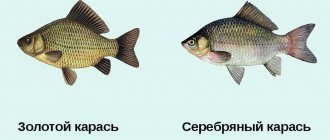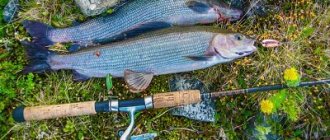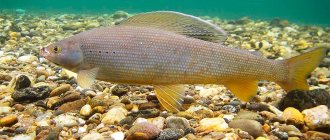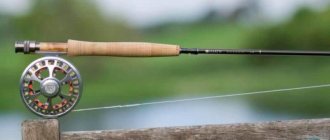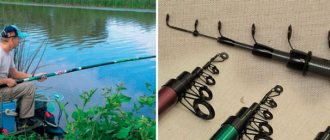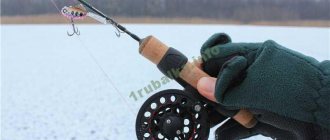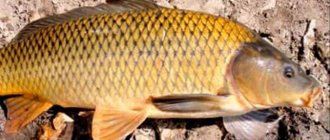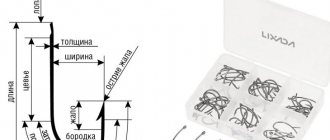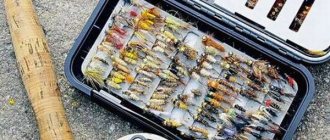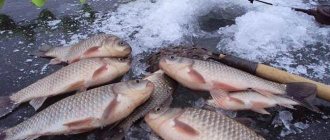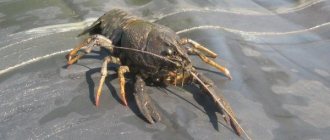Riding gear is an effective tackle for grayling, which is used in many regions of the country where this fish is found. The presented method of fishing is considered highly specialized; it is used in the warm season, when it is necessary to supply bait from the surface.
Peculiarities
A device called “Tirolka” is a rig of Italian origin, which is actively used when catching a wide variety of predators, including grayling.
Today, there is a lot of modernized gear that has shown high catchability, and in a variety of reservoirs. The operation scheme of this unit is as follows. An elastic plastic tube is made in a size of 10-12 mm in thickness. A lead weight is placed at its bottom, and on the other side a loop is installed, which is intended for fastening to the main thread of the fishing rod. A stick with a sinker directly performs the function of a limiter, which many experienced fishermen agree with. The Tyrolean fish is capable of holding even practically weightless and compact bait on the bottom, regardless of the buoyancy of the current. Spinning is the best choice for fishing with such a device, which has been proven in practice.
It is important that the tackle is rigid, as the angler must feel every touch of potential prey. As for the length of the tackle, it all depends on the dimensions of the reservoir
The optimal size is considered to be a Tyrolean from 2.4 m to 2.7 m.
The weight of the bottom weight can reach 50 g or more. The height of the stick can also be different - 10-30 cm, this indicator affects the rise of the bait above the bottom. Tyrolean is easily compatible with a variety of types of baits, be it wobblers, vibrotails, spinners or twisters
It is important to note that thanks to this device, the possibility of snagging is minimized, and this is a significant plus when fishing in overgrown reservoirs. The device is a structure of a float and a weight; as a result, the heavy part sinks to the bottom, and the upper part becomes vertical, thereby raising the leash or fishing line by about 10-25 cm
Fishing for grayling using a spinning rod
Spinning tackle is one of the simplest tools for catching grayling. For the most part, light and ultra-light tackle is suitable for catching fish. Its length will rarely exceed 2.7 meters, and it itself should be distinguished by its lightness and ergonomic handle. After all, the dynamics of this method are quite high and a heavy spinning rod will quickly tire the fisherman. For sharp hooking you need a spinning rod with fast and even super-fast action. In addition, such tackle copes better with controlling the movement of spinners and wobblers. Inertia-free lightweight reels with a finely adjustable drag marking 2000–2500 units will ensure comfortable fishing and retrieving the trophy.
The spools are charged with a braided cord, the diameter of which is from 0.1 to 0.15 mm, which depends on the expected size of the trophy being caught. The main thread should be about one hundred meters.
Rotating spoons and wobblers with their own crank-type game are used as bait. According to the Meps classification, rotating spoons correspond to numbers ranging from 00 to 3. The Meps model Aglia in silver, copper, white and black colors with red large dots is considered a classic. Cranks for catching graylings rarely exceed 3–5 cm in length, imitating the shape of a small fish or any kind of insect. Sometimes, with specific equipment and certain fish behavior, it is possible to use a wet fly.
Basic elements of gear
Riding gear consists of a float, which is attached to the end of the fishing line, and several leashes with dry flies located above the bite alarm. Has the following characteristics:
- equipment length up to 1.5 meters;
- two or three leashes 5–10 cm long made of monofilament fishing line with a diameter of 0.16 to 0.20 mm;
- main thread about 0.30 mm thick;
- dry flies, closely resembling the natural food in the place where grayling is caught.
Despite the fact that the riding gear is considered a specialized grayling tackle, it is successfully used for hunting various representatives of salmon fish. In particular, the equipment is effective for fishing trout, lenok, pink salmon and even taimen. The main thing is to choose the right bait.
For reference! The tackle is most popular on Baikal, Yenisei, Angara and other Siberian rivers.
The mood for grayling consists of the following components:
- rod;
- coil;
- main line;
- float;
- leashes;
- flies.
Spinning rods for riding gear are selected from 2.4 to 3.0 meters in length. It should be moderately powerful and tough. As a rule, models with dough up to 40–50 grams of fast action are used.
It is better to take a spinning reel with a size from 2500 to 4000. Any budget model from Salmo, Ryobi, DAM, Kosadaka and other brands presented on the domestic market will do. Some fishermen, especially representatives of the old school, prefer the good old inertia type Nevskaya.
Photo 2. The setup is mounted on a regular float.
The float for riding is made of wood or foam. Some fishermen use cork, rubber, plastic, and other materials with positive buoyancy that can be used as a bite alarm.
The best float shape for riding is conical. It is surrounded from below with lead so that it is half submerged in the water. The upper part of the bite alarm can be painted red or another noticeable color to timely record the optimal moment for hooking.
The float for riding is tied to the free end of the main leash, which has a length of 1 to 1.5 meters. For it, a monofilament line with a thickness of about 0.2 mm is used. You can use less visible fluorocarbon.
Advice! In addition to artificial flies, you can fish with natural bait. These are semi-aquatic insects, such as grasshoppers, mayflies, gadflies and others.
Grayling is caught mainly from the shore, since its fishing is carried out on small tributaries and streams that flow into large deep rivers. However, when fishing on lakes, wide stretches and vast water areas, you may need a boat that will be more effective in such situations.
When retrieving, the angler should try to give the flies the most natural behavior characteristic of an insect that has fallen into the water. Grayling is attracted to bait that leaves waves or a trail behind it on the surface, jumps up and falls down again.
Riding gear is effective in hard-to-reach places. It happens that the angler cannot get to the fishing point or get to it. Then you need to fuse the equipment into the desired zone. This is done like this:
- The fisherman selects the optimal point for fishing on the shore or positions the boat to deliver the equipment to a promising area.
- A short cast of the equipment is made or it is simply lowered into the water at the feet.
- The bow of the line guide is left open, allowing the stream to freely release it from the spool, carrying the equipment to the desired point.
- When the flies reach the promising zone or swim slightly past it, the reel arm snaps into place and the angler begins to slowly retrieve.
The grayling bites sharply. The fish rises to the surface, grabs the fly and quickly pulls it down, hooking itself in the process. The fisherman does not have to make even a light hook, since by the time the catch is already on the hook. Sometimes it happens that a predator takes it with a “doublet”, which leaves an unforgettable impression.
The riding setup for grayling fishing is a simple, effective rig that can be assembled and mastered by any angler. It is best used during periods of mass insect emergence. The tackle works on any reservoir, regardless of its size and special fishing conditions. The main thing is to choose the right fly and fish search tactics.
Making Baldy with your own hands
Quite often, fishermen make their favorite gear themselves at home. To make Balda, you will need sinkers. Spindle-shaped or cone-shaped lead weights can be purchased at the store.
To make it yourself, you will first need to make a mold for casting from plaster. This is a more labor-intensive way to obtain a sinker, but it can be made in any shape. For low tide, you can take a tube of suitable diameter and insert it into the sand. Lead is melted in a metal container and poured into the prepared mold.
The cooled workpiece should be pulled out well, so the tube is selected from soft metal.
The bottom and top edges of the resulting workpiece are rounded with a file. It is necessary to retreat 2–5 mm from the narrow top of the cone and drill a hole. In lead it is made with an awl. When drilling, sharp edges are formed on the holes that need to be removed. Otherwise, the fishing line may be damaged when pulling and using it.
Lead is a toxic material, so be careful when working with it and only melt the material outdoors. To make a sinker, you can use hardwood molds, which are made as follows:
To make a sinker, you can use hardwood molds, which are made as follows:
- A blind hole of the required depth and diameter is cut or drilled in a piece of wood.
- The mold is cleared of sawdust and a lead alloy is poured into it.
- The cooled product can be removed by turning over the wooden blank. If the sinker does not separate, then the wood must be carefully split.
Now you need to choose hooks that should be shorter than the sinker. Colored cambrics are put on the hooks and the tackle can be collected. This is done in the following sequence:
- The first hook is put on the fishing line with the tip forward;
- sinker;
- the second hook with a sting from the sinker;
- A loop is formed from the fishing line.
The knot must be tied securely so that the fishing line does not come undone and the diameter of the loop remains unchanged. Otherwise, the tackle may be lost during fishing.
You can make a balda for bottom fishing from any material that can reliably hold the bait in one place even in high currents. In extreme cases, you can even use a large nut as a sinker. Such a bait will not be able to serve for too long, since the thread on the nut will fray and tear the fishing line. When using a chrome nut, predators will be interested in its shine, and a catch will be guaranteed.
Making tackle "Balda-spoon"
The process of making such bait is more complicated. It is necessary to take care of the quality of the spoon, which as a result should hit the right point, not go to the side when swinging the fishing rod and play attractively in the pond.
Spoons with “loose” action have proven themselves well. After swinging the rod, they take a horizontal position, and then oscillate and sink to the bottom in the right place. If such baits move away from the hole, it is not a very large distance. The “loose” ones include “Petersburg sleeper”, “half-diamond”, “rhomb” and others. Hooks are attached to the finished spoon, and the tackle is assembled in the same way as the classic one.
Balda with a secret
Over time, the bottom tackle was modernized and an additional hook was attached at a distance of 15–25 cm from the sinker. It is installed with the tip facing up and secured with stoppers on both sides. The stops make the additional hook motionless, and when Balda hits the bottom, it jumps, which attracts predators. A small bead is additionally installed between the hook and the tackle, due to which the hook will be lowered better.
Making flies with your own hands
Recently, handmade flies have become more and more popular in the fishing world. Tying a fly for grayling is not at all difficult, sometimes even easier than buying it. First of all, arm yourself with the following materials and tools:
- vice;
- scissors;
- tweezers;
- feathers;
- thin threads;
- wool (ideally, but if not, spandex can be used);
- beads or large beads;
- sharp hooks;
- waterproof glue.
Stages of creating a fly:
- We put a large bead on the hook and clamp it with a vice.
- To form the backing, take a dark (ideally, black) thread.
- We take a rooster feather for the tail of the front sight and fix it with a thread on the fore-end, trim off the excess.
- We form a body from wool (or its substitute).
- We frame the head with a train of feathers, which is also secured with thread
- We remove the excess, and at the final stage we impregnate the front sight with waterproof glue.
Common grayling
This subspecies is also known as European grayling. The name is certainly associated with its distribution area, which covers European countries, not only mainland France and Germany, but also island countries - Great Britain and the Scandinavian countries. In Russia, it can be found in almost all rivers up to the Urals; there is no such fish only in the basins of the Don and Dnieper rivers, as well as in the Crimea and Kuban. Despite its love for fast-flowing rivers, grayling is also found in European lakes, for example, in Lake Ladoga and Onega. There it stays until the start of the spawning period. It goes into the rivers to spawn.
In the northern waters of Russia, grayling is present in large numbers here and there, and fishermen certainly take advantage of this. But in the Yaroslavl, Chelyabinsk, and Moscow regions, the number of European grayling is extremely small, so the catch of this fish is strictly regulated. The Russian Red Book lists this species as endangered, so fishermen who accidentally catch an individual are required to release it. Again, the law does not apply to all regions, but only to the Moscow region, Yaroslavl, Chelyabinsk and their environs. In other parts of the country you can catch this fish safely. And if you are interested in this topic, then here you can find out what gear is needed for this.
The common grayling has a small lower and upper jaw
In order not to break the law, even by accident, any fisherman must know what this fish looks like, because ignorance of the rules does not exempt you from responsibility. By the way, you can pay for inattention on a fairly large scale. According to official data, today illegal fishing of European grayling is punishable by a fine of 1,500 to 2,000 rubles, and the gear used to catch the fish is also confiscated. This amount also includes the penalty for the caught fish itself - about 500 rubles per piece.
So, what does this “expensive” fish look like, the capture of which can hit your wallet hard? First, look at the photo of grayling.
In certain lighting, the fins of a fish can shimmer, making it invisible in a mountain river with a large current.
A high crest is a distinctive feature of all subspecies of the grayling family. It helps the fish stay in the current.
As you can see, the European grayling is characterized by the fact that it has a small upper jaw, which makes the entire mouth of the fish look small. The mouth is armed with small teeth, they are weak and almost invisible, since they look more like bristles.
Fishing for Siberian grayling
Grayling fishing is an exciting activity. In the European part of Russia, this fish is most often caught on a spinning rod using small spoons.
The body has an elongated, slanted shape, thanks to which the fish moves freely both with and against the current. This subspecies is characterized by the following maximum length-to-weight ratio: 50 cm and 1.5 kg.
The calling card of grayling is its color. Firstly, it has very large scales compared to other fish of similar size. Up to 93 scales can be counted along the lateral line. Along the back they give the fish a greenish color, on the sides they merge into a tin-silver surface, and the belly makes it silver-white. Young grayling fish are distinguished by the presence of oval-shaped spots on the sides; with age they merge with the main color of the fish.
Ice fishing for grayling is common in many regions.
The main fin of grayling consists of 13 or more branched rays, plus about 5-7 unbranched ones. They form a real “sail”, which distinguishes this fish from other representatives of the underwater kingdom. Often the fins, which are located in the area of the chest and abdomen, are gray-yellow in color. In older individuals, the pectoral and pelvic fins may have a reddish tint. The tail, anal fin and dorsal sail have a purple tint. Very effective.
During the period when grayling reaches sexual maturity, the color becomes even brighter and more attractive. Biologists believe that mimicry is the main language of fish, with which females express their readiness to reproduce. In males, during the mating season, in addition to color, the height of the dorsal fin also changes. It stretches even more in length, and becomes larger and tougher.
The Baikal subspecies has a pronounced dark color. This is due to the deep lifestyle characteristic of this subspecies
For Baikal grayling!
Now there is a flood in many Siberian regions, and spinners are looking for luck in other regions. To open the summer spinning season, and at the same time catch such a delicious and at the same time one of the most athletic fish, like grayling, we went to the Baikal rivers.
Snezhnaya and Selenginka rivers
To be fair, it must be said that Siberia is large and each region has its own laws. Directly on Lake Baikal, grayling fishing is prohibited until mid-June, but on some tributary rivers (not all!) Fishing with sporting gear was allowed in May. The path we had planned ran to Sobolinoye Lake, located 30 km from Baikal, where, according to our guides - experienced tourists and fishermen, members of the Irkutsk club "Float", grayling is always caught.
Having arrived in Irkutsk by train in the morning, we, without hesitation, set off on a rather long motor rally of 200 km to the “Warm Lakes” camp site, from which the start to Lake Sobolinoe was scheduled. This camp site is located on the border of the Irkutsk region and Buryatia on the banks of the beautiful Snezhnaya River, where you can not only spend a decent night, but also leave your cars in a guarded parking lot. Having changed into fishing clothes and filled our backpacks to capacity with equipment and provisions, we, full of joyful forebodings, set off on a hike.
It was unrealistic to walk the entire path along a very difficult forest path in the remaining half a day, and we, having covered half the path, set up our first camp at the confluence of two rivers - Snezhnaya and Selenginka. The place was very beautiful and promising from a fishing point of view. Here our guide Igor Mikhalev gave us a short lecture about fishing for grayling and lenok and introduced us to the main Baikal gear for these fish: a cargo set.
Cargo attitude
The tackle is a set of lead weights sequentially located on the fishing line. All weights are elliptical in shape and differ from one another only in size and weight. The setup ends with a leash with a bait tied to it. The purpose of any weight setup is to keep bait or artificial bait suspended at a given depth.
The greater the depth and speed of the current, the longer and heavier the tune is made and the lead weights are fixed closer to one another on the forest. Our settings, given to us by Igor, weighed 16-20 grams, which is quite enough for shallow mountain rivers.
An important thing in the mood is the float (float). It should, with a minimum size, have maximum load capacity and a streamlined shape that makes it easy to pull it upstream, and have good bite sensitivity. A stop knot is tied on top of the influx on the main line and a bead is put under it. Thus, the angler, by moving the locking unit up and down, adjusts the depth of the bait's immersion. The most important rule is that the bait should move directly near the bottom and even lightly strike the rocks.
The weight setting is used both when fishing “revving” (on rivers) and in still water (on Baikal and other lakes). Igor had with him a whole arsenal of prepared settings, which were attached to the main fishing line. Moreover, at the very setting, a miniature latch was provided, with the help of which the leash with bait (fly) could easily be changed.
So, the gear was collected and we started fishing. It immediately became clear that fishing with inertia-free reels in a heavy-duty setting is not very convenient, and ordinary inertial reels or multipliers are much better suited for such fishing. The thing is that the cargo attitude requires constant monitoring. The line should be in tension at all times (or in a state close to it), and at the slightest dive of the float an immediate hook should follow. If he blinked for half a second, he was left without fish. Grayling instantly detects the catch and immediately spits out the deception.
The evening spent perfecting the technique of fishing in a heavy-duty mood was not in vain. Although we didn’t catch any fish, we learned the theory of fishing. According to Igor, there is still little fish in the rivers: either it has not left Lake Baikal, or has already gone to the upper reaches, and there is nothing for us to do here. But tomorrow on Lake Sobolinoye...
Lake Sobolinoye
Getting to Lake Sobolinoye is quite a difficult task even for an experienced tourist. We had to walk along a barely noticeable path through windbreaks, dwarf cedar, rocky rows (kurums), and at the end of the path we had to walk almost a kilometer knee-deep in water along the shore of Lake Sobolinoe, thus bypassing the impenetrable coastal forest. Already in the dark we reached the desired site on the shore of Sobolinoye Lake and set up camp.
Two days of travel have already passed, and we still haven’t seen any fish. It was time to compensate for our labor costs with good fishing. Lake Sobolina was formed several centuries ago as a result of an earthquake and is essentially the bed of the Selenginka River, but unlike the river it has a depth of 60-80 meters. Below the lake there are several powerful rapids that cannot be overcome by lenok and, probably, grayling moving from Baikal, and above the lake, 5 kilometers upstream of the Selenginka River, there is a Skazka waterfall several tens of meters high, which in turn blocks the upward movement of fish. Thus, a closed ecosystem is formed on Sobolino Lake, in which the local grayling cannot go far upstream, or downstream either, and stays mainly in the lake.
Everything suggested that the grayling simply had nowhere to go, and given the inaccessibility, it should be almost unafraid, and therefore active. But that was not the case... It is quite possible that we found ourselves in a period when the fish were busy spawning and went either to the depths or to some other places unknown to us. To finally check all the versions, Igor walked up the Selenginka River to the waterfall, but even there he did not have a single bite. We also did not waste time, and during the day we fished the waters of the lake in search of grayling. So the whole day passed in labor. In the evening, a very strong wind blew (the lake is located at an altitude of more than 1 km above sea level), which literally tore down the tents, the air temperature dropped sharply, and gradually the rain turned to snow. Having spent the night in an old and leaky tent, by morning we were wet and chilled. Without hesitation, we began to get ready to head back.
Words cannot express how difficult and difficult it turned out to be. We decided to walk the entire journey of almost 30 km in one day with heavy backpacks on our shoulders. In addition to physical difficulties, on the way back we encountered another problem: according to our calculations, we collected more than 300 ticks on ourselves! During the journey, we noticed that ticks, as a rule, are found in pockets. Moreover, the concentration of ticks in the foci is such that in just 1-2 minutes of travel you can get up to 20-30. All the ticks went to one or two fishermen walking in front of the group. It was they who collected all these insects from the path. The most important thing is to look around regularly and dress tightly, and then no ticks will be scary. Thanks to these simple rules, our entire group remained intact, and no one received a single tick bite.
Almost at midnight we finally reached our base and, completely exhausted, went for a late dinner at the nearest “cafe”...
Luck
The next morning, despite the aches all over our bodies, we decided to dedicate ourselves to catching grayling - perhaps we shouldn’t have traveled so far... At dinner we learned that not far from our base, grayling from Lake Baikal had already begun to enter one very small river and there a day ago it was successfully caught using a weight setting, but not with a fly, but with a worm. Luck smiled on the most experienced of us, Igor from Irkutsk, who caught quite a respectable 8 graylings in just 40-50 minutes. The grayling came from Lake Baikal, where it was still feeding on bormysh, and in the river it also preferred a fly with a color similar to the bormysh. My white and red flies showed only grayling exits, but when approaching the fly, he stopped and did not dare to attack. But I was still pleased with the result of the fishing, I saw how local grayling was caught, and in general I learned a lot of useful information.
Konstantin FADEEV, newspaper columnist
Grayling flies
To catch grayling on Lake Baikal and its tributaries, natural baits (earthworm, drill, grasshopper) are used. But sports anglers always prefer artificial flies. Graylings take flies tied to thin leashes more often, without fear, and there are much more bites than on leashes more than 0.2 mm thick. But you need to take into account that the grayling in those parts are very large, reaching a weight of 1.5-2 kg or more. It is almost impossible to keep such giants on a weak, thin leash. So, when using a main line with a diameter of 0.25, you need leashes no thinner than 0.18 mm.
How to use?
After you have purchased the optimal artificial bait for grayling, you should take care of the correct implementation and compliance with all the rules and principles of operation.
Gear and installation
Before you start using the bait, it is very important to tie it to the fishing line correctly. Remember that the knot must be strong and reliable
One of the most popular is the Uni-node, to create which you must follow a strictly defined sequence of actions.
- First, you need to thread the fishing line into the ring of the fly hook (and this needs to be done from the outside). In this case, a 20-centimeter piece of fishing line must be attached parallel to the main thread.
- Next, from the above 20-centimeter segment you need to make a loop below the base. In this case, the edge of the fishing line is wound inside the loop, wrapping both threads.
- In order to tie a fishing line, you need to hold the fly and pull up the free end of the fishing line.
- When a knot is formed at a distance from the front sight, it must be moistened. Then you need to tighten the knot and cut the end of the fishing line.
In addition to knowing how to tie a fly to a fishing line, you should also know what gear is used when fishing for grayling. These, for example, include a float, tees, etc. Let's consider the necessary gear.
To catch grayling, it is important to choose a suitable fishing rod, the length of which should not exceed 5 meters. You should not take a fishing rod that is too heavy, as it has a low level of convenience and comfort during use. A popular brand of fishing rods for grayling is the Volzhanka model of the “Fortune” series. In addition to the fishing rod, you need to pay attention to buying the optimal reel
It should be borne in mind that both inertial and non-inertial types of this device are suitable. The comfort of using a fishing rod will be increased by the use of a wired type reel. Another essential element for grayling fishing is fishing line. It must be quite strong and reliable, since during the capture process the grayling will strongly resist. To catch grayling, it is recommended to choose small and compact floats, the carrying capacity of which is in the range of 1-10 grams. For wide rivers and in case of long-distance casting, floats with a weight of 20 grams will be useful. Sinkers in the process of catching grayling will be relevant if you are fishing with a rod, hangar, or bulldozer. The best option is considered to be a sliding sinker-olive. In addition, a feeding pellet will be useful, which will help adjust the hooks on the bottom.
Fishing technique
When catching grayling with a fly (regular fishing rod or spinning rod), it is very important to take care of a high level of realism. In addition, a number of other rules must be observed.
Let's take a closer look at them.
Depending on your own desires and preferences, you can cast the fly both short and long distances. In this case, you should focus on environmental conditions. It is imperative to control that the bait moves freely in the direction of the current. In this case, the fishing line should not create any difficulties or complications. It is worth keeping in mind that according to its natural characteristics, grayling is a fairly mobile fish that provides operational resistance during the fishing process. This fact must be taken into account during the fishing process and in no case resort to a forced method. The moment to strike must be determined intuitively and based on visual signs. It should be noted that the most favorable seasons for grayling fishing are autumn and summer. In winter, this fish moves little, so finding its location will be difficult, especially considering that you will have to drill a hole in each of them, making considerable physical effort. The largest concentrations of fish of the salmon family can be found in dense underwater thickets and pools
Grayling loves small rivers with cold water; fishermen consider rifts with a rocky bottom or pebbles, holes near the shore with a shadow curtain from the sun, to be the best habitat for grayling. The important thing to know about grayling is this: it will never chase its prey. His hunting tactics are different: when he sees an insect, he rushes across it and grabs it
This must be taken into account when wiring. It should be slow, even, without sudden jerky movements. If the bait moves too quickly, the grayling will not be able to cut the corner correctly to catch it, and it will definitely not “play catch-up”. If you decide to use a spinning rod to catch grayling, rotate the reel slowly and smoothly.
Watch the video on how to make a fly with your own hands.
Spinning tackle
There are two main types: riding gear and cargo gear. The first is used for fishing with floating, dry flies on the surface of a water stream. The second option is used for fishing with heavy, wet flies for guiding in the water column
It is important to choose and make the right equipment for specific fishing conditions
High spirit
Tackle for grayling for dry fly fishing is equipped as follows: 1. A loaded float is attached to the main line. It must be configured in such a way as to keep the garland on the surface of the water and, when moving, not to overlap the leashes and not to tangle the garland.
2. A garland with leashes and flies is attached below the float. To make it, whenever possible, a floating line is used so that the flies are constantly on the surface of the water. The thickness of the fishing line used is 0.22-0.28 millimeters, for leashes: 0.14-0.25.
You can knit the equipment in another layout option: with end fusion. In this case, the float is attached to the end of the garland, and the leashes are located above it. This option is long-range, due to the minimal likelihood of overlap, but it loses in catchability, since the bombard often scares the fish.
Most often, fishermen make the float for the Angara mood with their own hands. However, as such, water-filled floats or a floating bombard can be successfully used.
Cargo attitude
To connect the cargo mood, a sliding float, a garland with leads and a sinker are used. Various options can be used for this:
- a chain of small pellets, the mass of which decreases from the float to the front sight;
- sinker in the form of a droplet or olive;
- Tyrolean stick;
- sinking bombard.
When using a bombard, sbirulino or spaced load, the best option for making the rig is the end location of a single leash with a front sight. This solution will work better in a gentle stream when fishing from a boat.
The spinning rod used for this type of fishing is short, no longer than 2.10 meters. Its test is up to 12–15 grams. It is advisable to have a small margin of safety, since you have to fish in a strong current.
The spinning reel is selected to match the rod in order to harmonize with it and not tire you during the fishing process
Important attention should be paid to the laying of the fishing line, since fishing is carried out on thin equipment, and a poor spinning rod will often “throw” loops and tangle the cord, which can lead to its damage
The age-old question of line or line is not as relevant when fishing for grayling as for other predators. Everyone chooses based on their preferences. Braid gives the tackle greater sensitivity and strength, and monofilament is invisible and well dampens the jerks of grayling when fishing.
How to make a float for grayling with your own hands
I believe that the best float for grayling is one that is made by yourself. This is the only way to create an element of equipment that is maximally adapted for difficult fishing conditions on small rivers and streams.
Float materials
They can be balsa, an ordinary wine cork, willow bark or dense foam. Cork and bark are good because you don’t have to paint them - they already have a natural color.
If the float is supposed to have an antenna, you can use ready-made thin wooden sticks for it, for example, skewers for kebabs.
The blank for the float is processed as follows: first, with a sharply sharpened knife, it is given a semblance of the shape that the finished product will have. Then the unevenness is smoothed out with coarse sandpaper. The final finishing of the float body is best done with fine sandpaper.
When forming a float, you can use an ordinary drill as a “lathe”.
Primer and painting
In the case of wooden, cork, or bark floats, everything is simple - any paints and varnishes are suitable for them.
For polystyrene foam, paints based on acetone and other solvents that can corrode this material are contraindicated. Foam floats can only be coated with water-based paints.
The surface of a freshly machined foam float body is always porous, which can negatively affect the appearance of the finished product. If measures are not taken, the float for grayling will come out with a rough, spongy surface. Of course, this will not affect its catchability in any way. But if the final appearance of the product is important to the fisherman, at the very beginning of painting the foam is primed with PVA or BF glue, then dried and lightly processed with fine sandpaper. After this, you should cover up all the unevenness with some thick mass, for example, ordinary water-based paint, to which a powdered filler has been added for greater thickness, for example, talc (baby powder). This technique was first used in the manufacture of foam floats by Khabarovsk fishermen.
It is more convenient to fill the pores with your fingers - this makes it easier to control the final smoothness of the float body. It is better to divide this process into several stages, between which slightly dry the float. When all the pores are covered, after final drying it is worth treating the float a little with fine sandpaper in order to “cut off” possible irregularities.
After painting in the desired color, the float is coated with waterproof varnish.
Tackle for catching grayling with fly
What gear is most often used for catching grayling with a fly? And which ones bring the most success? Perhaps one of the most popular is fly fishing gear, consisting of a rod, reel, cord, and, in fact, bait. When fishing for grayling using artificial flies, use:
Classic fly fishing
It is important to learn the skill of proper casting. The bait is light and may often not reach. Semi-fly fishing
Convenient fishing tackle, consisting of an inertial light reel, a spinning rod, and a sinker float. The float does not act as a bite alarm. His task is completely different. It is needed so that the cast can be cast further, and, more importantly, more accurately. In this case, you need to use a fishing line from 0.25 to 0.3 mm thick. A thinner thread is used for leashes - from 0.18 to 0.2 mm. Grayling is caught quite well on a boat. It is also called water kite, sled. The design can be varied, up to a catamaran. To control you need a rigid spinning rod, an inertial reel, and a main line up to 0.4 mm thick. It is important that the length of the leashes be different. Then the flies will touch the water at the same time. Another interesting option is called tug. It looks simple. Two fishermen connect their rods with one line, up to 0.3 mm thick. Three leashes 1 meter long are attached to it. They stand on different banks.
Catching grayling with a float rod
They begin to fish with a float rod immediately after the rivers open and the water becomes clear. The most common way is through wiring. It has become especially relevant recently with the advent of inertia-free reels. The following baits are used for float tackle: caddis flies, worms and various insects (mayflies, grasshoppers, flies, gadflies and horseflies).
Float tackle is selected depending on the place and method of fishing. For fishing from the shore - casting - use heavier tackle. This is necessary in order to deliver the bait to the desired fishing spot. A rod 3.5 to 4.5 meters long with rings. A small inertia-free reel on which a fishing line with a diameter of 0.2–0.28 mm is wound.
A float weighing 3–5 grams, depending on the casting distance. You can use replaceable leashes made of fishing line with a diameter of 0.15–0.17 mm - this is important when catching larger, and therefore more cautious fish.
Fishing for grayling while fishing is considered the calmest, but you need to remember that after catching 2-3 specimens, you need to change the place of fishing and it is advisable to go downstream, since the frightened fish goes up.
